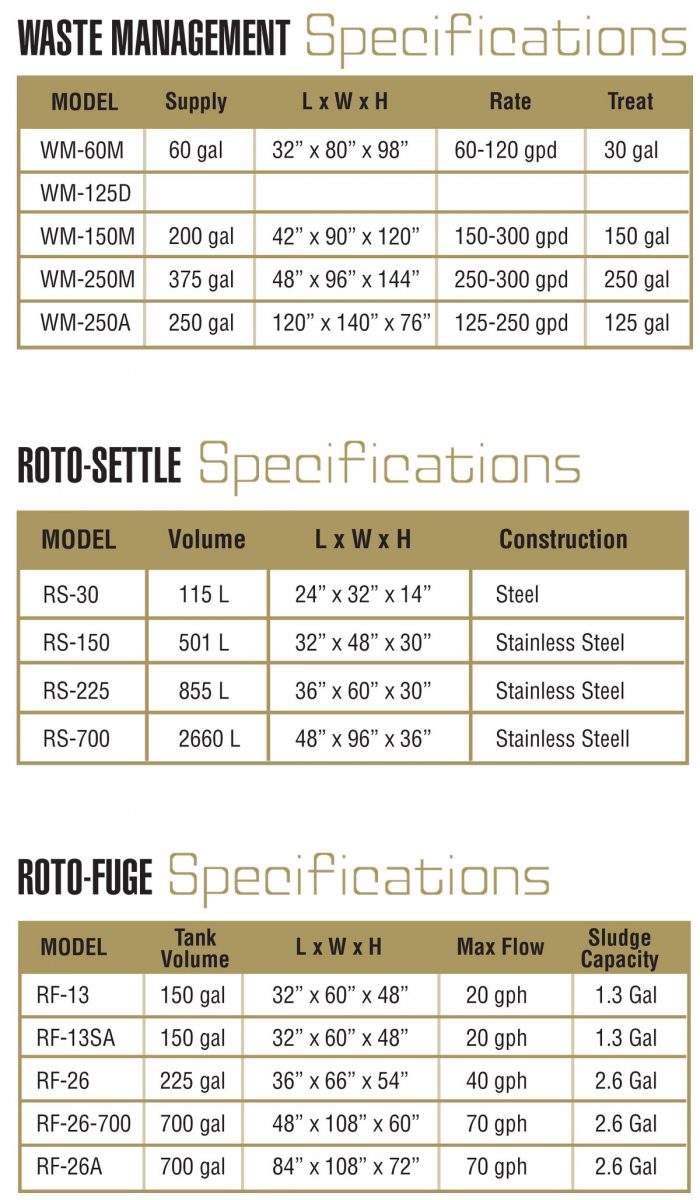Waste Treatment Equipment
Treatment technologies utilize the addition of liquid and/or powdered flocculants to remove the particulate contamination from the process fluid. This generates an optically clear solution for the most critical processing requirements or for discharge.
Treatment or flocculant addition can be added to Roto-Fuge systems but are usually associated with the manual or automatic stand-alone style Waste Management systems.
RECIRCULATION
Waste reduction, cost savings, and governmental compliance are driving forces to implement wastewater minimization processes. Hammond Roto-Finish offers a wide range of options to suit your processing requirements
The Process and Chemical experts at Hammond Roto-Finish have the answer for all of your wastewater applications. No matter what Waste Treatment system you choose, rest assured you are supported by one of the oldest and most respected finishing process companies in the world. Applications include:
Roto-Treat
– Wastewater treatment chemicals for Mass Finishing equipment
Roto-Cycle
– Patented recirculation compounds for Mass Finishing
Roto-Plenish
– Highly specialized additives for recirculation systems that replenish only the process consumed elements of your fluid
Roto-Settle Machines
Let Mother Nature do the work.
Abraded material and media swarf settle by gravity to the bottom of the tank as the fluid flows through the system on its way to the drain or back to the machine(s).
Roto-Fuge Machines
Roto-Fuge wastewater minimization units are designed to work with tumbling barrels, vibratory bowls or tubs and centrifugal finishing systems. The Roto-Fuge generates centrifugal forces up to 2000 times the pull of gravity to remove particles from the waste stream. The particulate remains as sludge in the basket liner and is easily removed. The solution is usually suitable for re-use or may be discharged to drain, if permitted. Optional agitation and flocculation systems generate clear solution for reuse in the finishing process.
The system consists of a stainless steel tank divided into three sections. Each section is connected by weirs to optimize system operation. Wastewater is introduced to the first section where solids are allowed to settle. In the second section, the fluid is agitated and pumped into the centrifuge located above this section. Centrifugal forces push the particulate from the solution and deposit it in the removable basket liner. The “filtered” solution flows into the third section (or supply tank) and is ready to be returned to the finishing process or drain.


